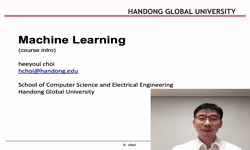본 연구에서는 클러스터링 기법을 활용하여 대한민국의 시군구별로 의료 자원과 인구 간의 균형을 분석하였다. 의료 이용 패턴, 인구 특성을 담은 공공데이터를 사용하였으며 K-Means, Hierarchi...
http://chineseinput.net/에서 pinyin(병음)방식으로 중국어를 변환할 수 있습니다.
변환된 중국어를 복사하여 사용하시면 됩니다.
- 中文 을 입력하시려면 zhongwen을 입력하시고 space를누르시면됩니다.
- 北京 을 입력하시려면 beijing을 입력하시고 space를 누르시면 됩니다.

클러스터링 기법을 활용한 대한민국 행정구역(시군구) 별 의료 자원의 균형 평가 = Evaluating the Balance of Medical Resources in South Korean Administrative Districts Using a Clustering Approach
한글로보기https://www.riss.kr/link?id=A109733892
- 저자
- 발행기관
- 학술지명
- 권호사항
-
발행연도
2025
-
작성언어
Korean
- 주제어
-
등재정보
KCI등재
-
자료형태
학술저널
-
수록면
359-379(21쪽)
- DOI식별코드
- 제공처
-
0
상세조회 -
0
다운로드
부가정보
국문 초록 (Abstract)
본 연구에서는 클러스터링 기법을 활용하여 대한민국의 시군구별로 의료 자원과 인구 간의 균형을 분석하였다. 의료 이용 패턴, 인구 특성을 담은 공공데이터를 사용하였으며 K-Means, Hierarchical Clustering, Spectral Clustering 등 다양한 클러스터링 기법과 PCA, t-SNE, LLE 등의 조합 및 하이퍼파라미터를 실험적으로 평가하여 데이터에 가장 높은 클러스터링 성능을 보이는 조합을 탐색한 결과 K-Means, 클러스터 개수 3개, LLE 조합이 적합함을 확인하였다. 클러스터 간 비교를 수행하였을 때 각 클러스터의 차이를 뚜렷하게 나타내는 다양한 특성을 발견하였고 이를 통해 유의미한 인사이트를 도출하였다. Random Forest Feature Importance를 사용하여 클러스터를 구분짓는 요인을 도출하였다. 각 변수의 동일한 스케일을 위해 Z-Score 표준화하였으며 변수 기여도를 가중치로 설정하여 합산한 점수를 순위별로 나열하였다. 본 연구의 결과가 실질적인 의료 인프라 개선을 위한 정책을 제시하는 데 도움이 될 것이라 기대한다.
다국어 초록 (Multilingual Abstract)
In this study, we analyzed the balance between medical resources and population across cities, counties, and districts in South Korea using clustering models. Public data containing detailed medical usage patterns and population characteristics were u...
In this study, we analyzed the balance between medical resources and population across cities, counties, and districts in South Korea using clustering models. Public data containing detailed medical usage patterns and population characteristics were used, and various clustering models such as K-Means, Hierarchical Clustering and Spectral Clustering were combined with dimensionality reduction methods such as PCA, t-SNE and LLE. Each clustering model, dimensionality reduction method, and hyperparameter combination was evaluated experimentally. As a result, the combination showing the highest clustering performance was determined to be K-Means with k=3 in conjunction with LLE. When comparing clusters, various characteristics indicated their differences. It provides highly meaningful insight into the medical gap in South Korea’s administrative districts. The factors that distinguish clusters were derived using random forest feature importance. The weighted sum of medical institutions, total specialized equipment, proportion of youth medical expenses, proportion of youth hospital staff, and number of hospitals per 1 km² was identified as the key variable that distinguishes clusters. We set these factors as weights, and the Z-Score standardized scores were ranked accordingly. It is expected that the results of this study will significantly contribute to the government policy proposal that suggests practical directions for medical infrastructure improvement.
동일학술지(권/호) 다른 논문
-
취업처 선호요인, 진로준비행동과 취업의도의 상관성: 4년제 대학교 학생을 중심으로
- 사단법인 한국융합기술연구학회
- 최은미
- 2025
- KCI등재
-
- 사단법인 한국융합기술연구학회
- Lili Mo
- 2025
- KCI등재
-
산양삼의 진세노사이드 함유 화장품이 안면 측면 피부의 모공, 주름, 색소침착 및 탄력도에 미치는 효과
- 사단법인 한국융합기술연구학회
- 이재범
- 2025
- KCI등재
-
간호학과 졸업 학년 대상 고위험 신생아 응급간호 시뮬레이션 실습교육의 효과
- 사단법인 한국융합기술연구학회
- 마진경
- 2025
- KCI등재




 KCI
KCI






